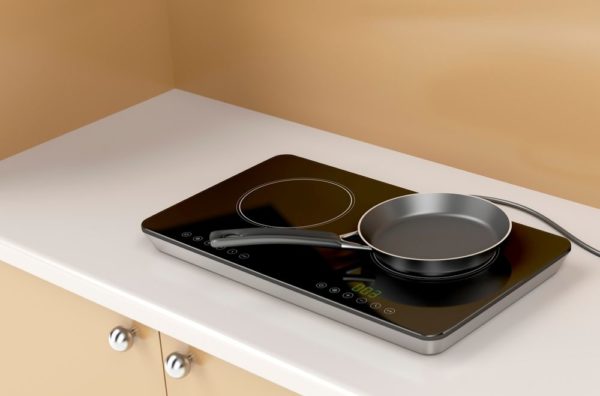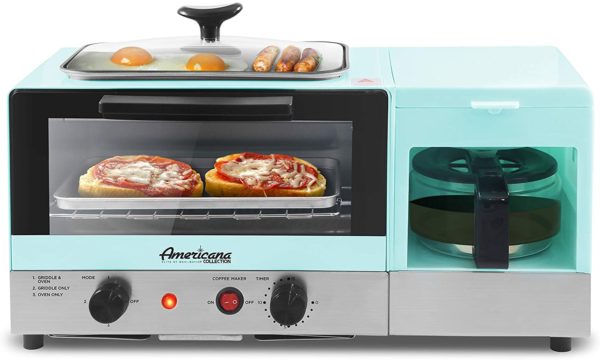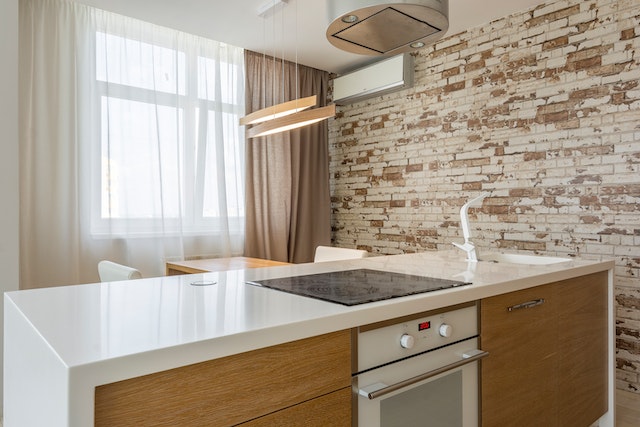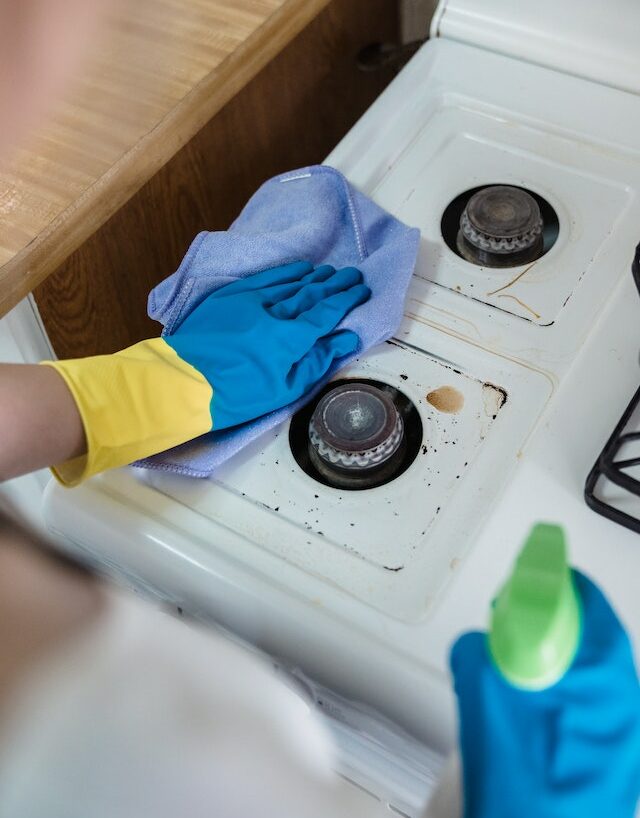Are your cabinets looking a little worse for wear? Wondering how often you should be cleaning them to keep them looking their best? Well, look no further! We’ve got all the answers you need to keep your cabinets in tip-top shape.
How often should you clean your cabinets? The answer may surprise you. Factors like usage, cooking habits, and location can all impact the frequency of cleaning. But don’t worry, we’re here to help.
In this article, we’ll explore the signs that indicate your cabinets need cleaning, as well as a recommended cleaning schedule to keep them looking fresh. We’ll also provide some handy tips for maintaining clean cabinets and share deep cleaning techniques to ensure they stay sparkling clean.

Say goodbye to grime and hello to cabinets that shine like new!
1. Factors that Determine Cleaning Frequency
You should consider factors such as the amount of usage and the level of kitchen activity when determining how often you should clean your cabinets. Your cabinets are an essential part of your kitchen, and keeping them clean is important for maintaining a healthy and inviting space.
The frequency of cleaning will vary depending on how much you use your kitchen and how busy it gets. If you have a bustling household with a lot of cooking and meal preparation happening daily, you may need to clean your cabinets more frequently, perhaps every few weeks. On the other hand, if your kitchen sees less activity and you don’t use your cabinets as often, you may be able to get away with cleaning them once a month or even every couple of months.
It’s also important to consider any spills or stains that may occur. If you notice any food or liquid spills on your cabinets, it’s best to clean them up right away to prevent any permanent damage or unpleasant odors.
By taking into account these factors, you can determine the appropriate cleaning frequency for your cabinets and ensure they stay in good condition for years to come.
2. Signs Your Cabinets Need Cleaning
If your cabinets have become as grimy as a neglected windshield, it may be time for a thorough cleaning. Keeping your cabinets clean not only enhances the overall appearance of your kitchen but also ensures a healthy and hygienic environment for you and your family.
Here are some signs that indicate your cabinets need cleaning:
- Sticky or greasy residue: If you notice a sticky or greasy film on the surface of your cabinets, it’s a clear sign that they need a good cleaning. This residue can accumulate over time, especially in areas near the stove or where you frequently handle food.
- Dust and dirt buildup: Cabinets are prone to collecting dust and dirt, especially in corners and crevices. If you see a layer of dust on the surfaces or notice dirt particles when you touch them, it’s time to give your cabinets a thorough cleaning.
- Foul odors: If your cabinets emit unpleasant odors, it’s a sign that there may be food spills or rotting items inside. Cleaning the cabinets will help eliminate these odors and create a fresh-smelling kitchen.
- Discoloration or stains: Over time, cabinets can develop discoloration or stains from spills, cooking oils, or even smoke. If you notice any unsightly marks on your cabinets, it’s a clear indication that they need cleaning.
By regularly cleaning your cabinets, you not only maintain their beauty but also create a sense of belonging in your kitchen, where everything feels fresh and inviting.
3. Recommended Cleaning Schedule
To maintain the cleanliness and hygiene of your kitchen cabinets, it’s advisable to establish a regular cleaning schedule that includes specific tasks for each week or month. By following a recommended cleaning schedule, you can ensure that your cabinets stay in great condition and provide a welcoming and inviting atmosphere in your kitchen.
Start by wiping down the exterior of your cabinets once a week. This will help remove any dust or dirt that may have accumulated. Use a gentle cleaner and a soft cloth to avoid scratching the surface. Additionally, take a few minutes each week to organize the contents of your cabinets. This will not only keep things looking tidy, but it will also make it easier to find what you need when cooking or baking.
Once a month, take the time to deep clean the interior of your cabinets. Remove all items and wipe down the shelves with warm, soapy water. This will help remove any food residue or spills that may have occurred. Also, check for any expired or unused items and discard them. This will help free up space and keep your cabinets clutter-free.
By following this recommended cleaning schedule, you can ensure that your kitchen cabinets remain clean and well-maintained. Not only will this create a pleasant environment for cooking and entertaining, but it will also give you a sense of belonging and pride in your kitchen.
4. Tips for Maintaining Clean Cabinets
One interesting statistic to consider is that regular maintenance can extend the lifespan of your kitchen cabinets by up to 10 years. Taking the time to clean and care for your cabinets not only keeps them looking great but also helps to prevent damage and ensure they last for many years to come. Here are some tips to help you maintain clean cabinets and create a sense of belonging in your kitchen.
| Tip 1 | Keep it organized |
|---|---|
| Tip 2 | Wipe down regularly |
| Tip 3 | Avoid harsh chemicals |
| Tip 4 | Handle with care |
| Tip 5 | Use shelf liners |
Keeping your cabinets organized is essential for maintaining cleanliness. Assign specific areas for different items and make sure everything has a designated place. Regularly wipe down the surfaces with a damp cloth to remove any dust, dirt, or spills. Avoid using harsh chemicals that can damage the finish of your cabinets. Instead, opt for gentle cleaning solutions or even just warm soapy water. When opening or closing your cabinets, handle them with care to prevent any accidental bumps or scratches. Using shelf liners can also help protect the shelves from spills and make it easier to clean up any messes.
By following these tips, you can maintain clean cabinets that will not only make your kitchen look great but also create a sense of belonging and pride in your home.
5. Deep Cleaning Techniques
Let’s dive into some deep cleaning techniques to keep your cabinets looking fresh and fabulous! When it comes to deep cleaning your cabinets, it’s important to go beyond the surface and get into all the nooks and crannies.
Here are three techniques that will help you achieve that sparkling clean:
- Remove all the contents: Start by taking everything out of your cabinets. This will allow you to thoroughly clean both the inside and outside. It’s also a great opportunity to declutter and organize your items.
- Use a gentle cleaner: Mix a solution of warm water and mild dish soap. Dip a soft cloth or sponge in the solution and gently wipe down all the surfaces. Make sure to pay extra attention to any stains or spills. Avoid using harsh chemicals that can damage your cabinets.
- Don’t forget the hardware: The knobs, handles, and hinges on your cabinets can accumulate dirt and grime over time. Take them off and soak them in warm, soapy water. Scrub them gently with a soft brush to remove any residue. Dry them thoroughly before reattaching them.
By following these deep cleaning techniques, you can ensure that your cabinets remain spotless and inviting. Remember, a clean and organized space creates a sense of belonging and makes you feel proud of your home. So go ahead and give your cabinets the attention they deserve!
Frequently Asked Questions
Can I use a regular household cleaner to clean my cabinets, or do I need a specific type of cleaner?
You can use a regular household cleaner to clean your cabinets. It’s important to choose a cleaner that is safe for the type of material your cabinets are made of.
Is it necessary to empty out the cabinets before cleaning them?
It’s not necessary to empty out the cabinets before cleaning them, but it can make the process easier. Remove any items that might get in the way, and then use a household cleaner to clean the surfaces.
What is the best way to remove sticky residue or grease buildup from cabinet surfaces?
To remove sticky residue or grease buildup from cabinet surfaces, grab a microfiber cloth and mix equal parts vinegar and water. Interesting fact: Did you know that vinegar is a natural disinfectant? So you’ll be cleaning and killing germs at the same time!
How often should I clean the inside of my cabinets, where I store food and dishes?
To keep your food and dishes safe, clean the inside of your cabinets at least once a month. Regular cleaning prevents dirt and bacteria buildup, ensuring a clean and hygienic storage space for your belongings.
Are there any natural or homemade cleaning solutions that are safe and effective for cleaning cabinets?
To safely and effectively clean your cabinets, you can use natural or homemade cleaning solutions. Mix vinegar and water for an all-purpose cleaner or combine baking soda and water for a gentle scrub.
Conclusion
In conclusion, keeping your cabinets clean is essential for maintaining a hygienic and organized kitchen. By considering factors such as usage, cooking habits, and environmental conditions, you can determine the frequency of cleaning that suits your needs.
Don’t wait for signs like sticky handles or unpleasant odors; set a regular cleaning schedule to keep your cabinets sparkling. Remember, a little effort goes a long way in preserving the beauty and functionality of your cabinets. So, let’s get cleaning and make those cabinets shine like a thousand suns!





